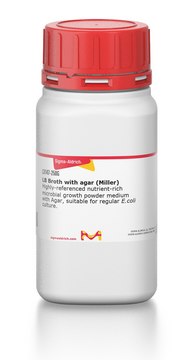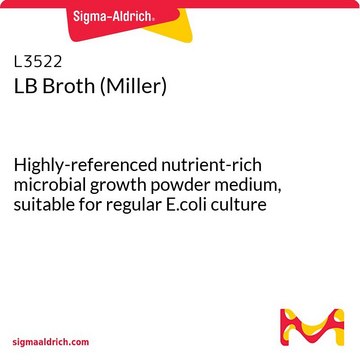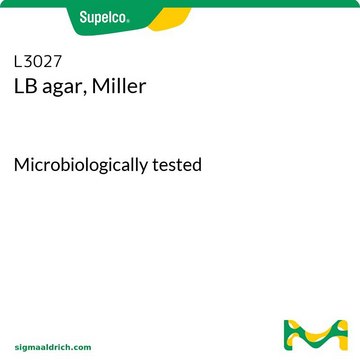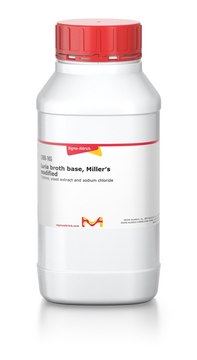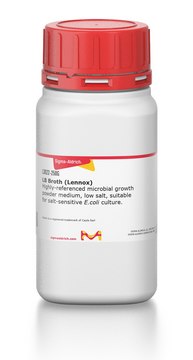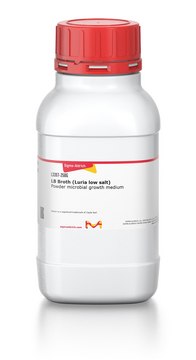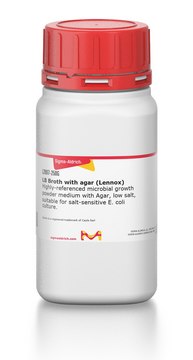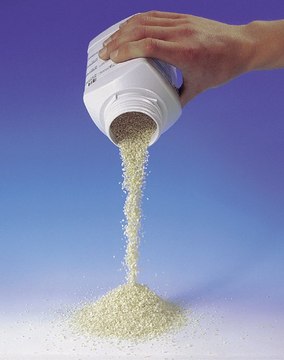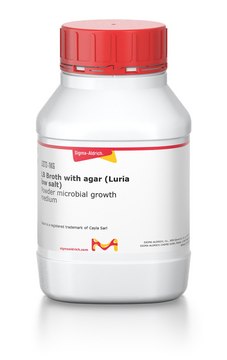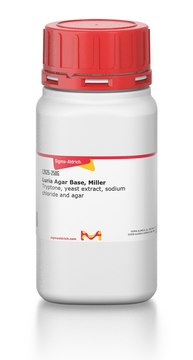L2025
Luria Agar Base, Miller
Tryptone, yeast extract, sodium chloride and agar
Synonym(s):
LA, modified, Luria-Bertani media, modified, Lysogeny broth, modified
About This Item
Recommended Products
Quality Level
form
powder
technique(s)
microbiological culture: suitable
application(s)
agriculture
microbiology
1 of 4
This Item | L1900 | L3147 | K4003 |
|---|---|---|---|
| form powder | form powder | form powder | form powder |
| application(s) agriculture | application(s) agriculture | application(s) food and beverages | application(s) agriculture |
| Quality Level 200 | Quality Level 200 | Quality Level 200 | Quality Level 200 |
General description
Application
Components
Reconstitution
Storage Class Code
11 - Combustible Solids
WGK
WGK 3
Flash Point(F)
Not applicable
Flash Point(C)
Not applicable
Regulatory Information
Choose from one of the most recent versions:
Certificates of Analysis (COA)
Don't see the Right Version?
If you require a particular version, you can look up a specific certificate by the Lot or Batch number.
Already Own This Product?
Find documentation for the products that you have recently purchased in the Document Library.
Our team of scientists has experience in all areas of research including Life Science, Material Science, Chemical Synthesis, Chromatography, Analytical and many others.
Contact Technical Service